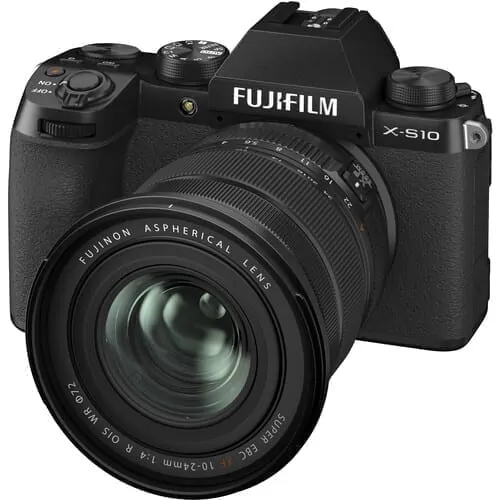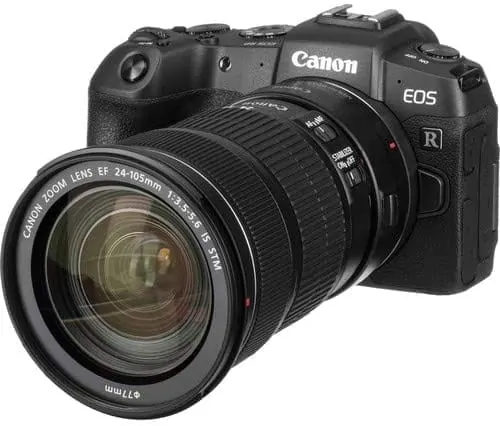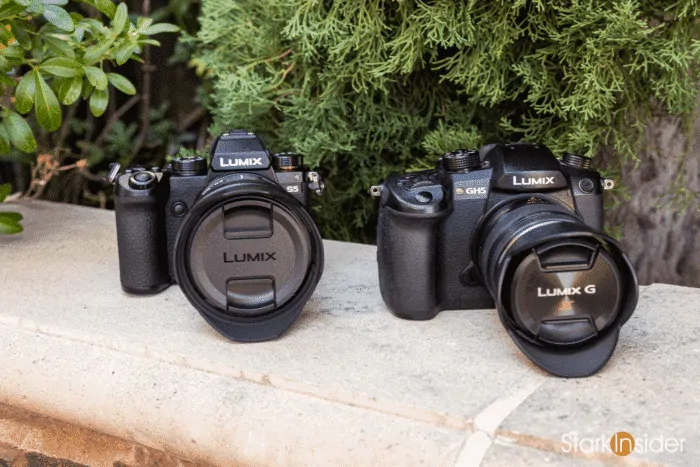
Fujifilm has consistently made high quality mirrorless cameras. Ergonomics are typically better than average. As are the menus and available lenses. And, of course, Fuji’s image and color science, especially the Eterna film simulation, is flat out amazing.
Still, its camera range, at least from what I’ve seen in the past few years, tilted slightly towards photographers when it came to design.
With the new and upcoming Fujifilm X-S10 that all changes.
First, Fuji has done away with the photo-centric top plate dials as found on cameras such as the X-T4 and X-T3 that allow for quick physical control of ISO, shutter speed and exposure compensation (from left to right respectively). Instead, you’ll find traditional dials on the front and back right side. For video shooters these controls make more sense. They’re more intuitive, customizable and fall exactly where you need them while you’re recording video. No wonder then that most mirrorless camera manufacturers — Panasonic, Sony, Canon — employ a similar layout. So that’s a much welcome design change.
Fujfilm X-S10: Key Specs

Then there’s the sensor. For the price you might expect something skimpy. Instead Fuji opted to build the X-S10 around a 26.1MP APS-C sensor. For this price point and segment that’s impressive. On paper at least that means this should be a true hybrid, a camera able to be effective at both shooting video and photos — sadly that’s something where I discovered that the new Panasonic S5 falls short. Sore the X-S10 is not a trendy full-frame. But I’m not sure it needs to be. APS-C approximates Super 35 and that’s where film has been for decades in terms of a look. Why not stick with what works? I’m happy that Fuji has opted not to chase that trend and instead build upon the excellent quality of its existing X-mount system.
Also, you’ll find all the other expected goodies in a modern-day mirrorless hybrid including:
- 5-axis In-Body Image Stabilization (IBIS)
- 4K video (with 10-bit 4:2:2 available via micro-HDMI which is perfectly fine from my perspective as you’ll want a larger screen anyways to nail focus and composition when shooting video projects)
- A 3″ flippy (articulating) LCD screen
I guess one limitation worth point out with respect to the X-S10 is the absence of dual memory card slots. There’s only a single SD slot. Again, though, not a big deal if you shoot serious video projects using an external monitor/recorder such as the Atomos Ninja V (highly recommended).
Fujifilm X-S10: Price and the Market
And, finally, there’s the killer feature: the price.
The Fujifilm X-S10 is only $999 USD.
Given the era of high-end mirrorless cameras that cost anywhere from $1,998 for the Panasonic S5 and up to $3,498 for the Sony a7S III and even as much as $3,899 for the flagship Canon R5 the value proposition is indeed tantalizing. Yes, I realize the X-S10 can’t go toe-to-toe on a spec sheet with those hybrids. Nor is it intended.
Rather, this is a camera that will be ideal for all sorts of projects where you need something compact, discrete, and yet, still high capable for both long-form video and high-quality stills. In the right hands there’s no reason to believe that it can’t be used for wedding films, music videos, short films, travel videos, etc. Why not? The one exception I can think of are situations when you need high frame rates. In those cases perhaps renting an a7S III or RED are good options. Consider the money you saved in the process by opting for a wallet-friendly X-S10 instead of the pricier up-market models.
Of course it’s obvious to suggest another and perhaps main market for the X-S10: YouTubers and Vloggers.
Fujifilm X-S10: Competition

When it comes to the competition at this price point one interesting option is the Panasonic Lumix GH5. Simply amazing for video the GH5 is simply a powerhouse for video — even though it came out nearly four years ago in 2017. I’ve shot several projects on the GH5 over the years for Stark Insider and found it reliable, easy to use and highly capable. Aside from a slightly digital image (which, of course, can be grained-up in post), the Achilles heel for the GH5 is that it’s not truly a hybrid. Sure, in addition to video it can shoot stills. But with only that 18MP sensor and a MFT sensor in my experience it falls short. That never bothered me in any case. For photos I still use a Canon 80D. For someone, though, that wants the true promise of a hybrid I see the X-S10 as being a better all-around option.
There’s also the Canon EOS RP to consider. About the same price and same number of mega-pixels (26.2) but with a full-frame sensor. Here I think the RP is the better choice for photo-centric users thanks to Canon’s best-in-class auto-focus system (DPAF). On the video-side the Canon here is not up to the task, at least not for serious projects. For instance, video on the RP is limited to 8-bit. That alone will rule out this one for those interested in serious color grading. Still a great camera though. It all depends on your needs and projects.
ALSO SEE: Top 10: Best DSLR & Mirrorless Cameras (November 2020)
As a die-hard GH5 shooter part of me is feeling for the X-S10. Especially Fujifilm’s vaunted color science and ability to produce “organic” imagery. Tempting indeed.
In any case, those in the market for a highly capable mirrorless camera equally adept at shooting video and photos should short-list the Fujifilm X-S10. Hands down, one of the top camera releases of 2020. A hybrid camera done right.


